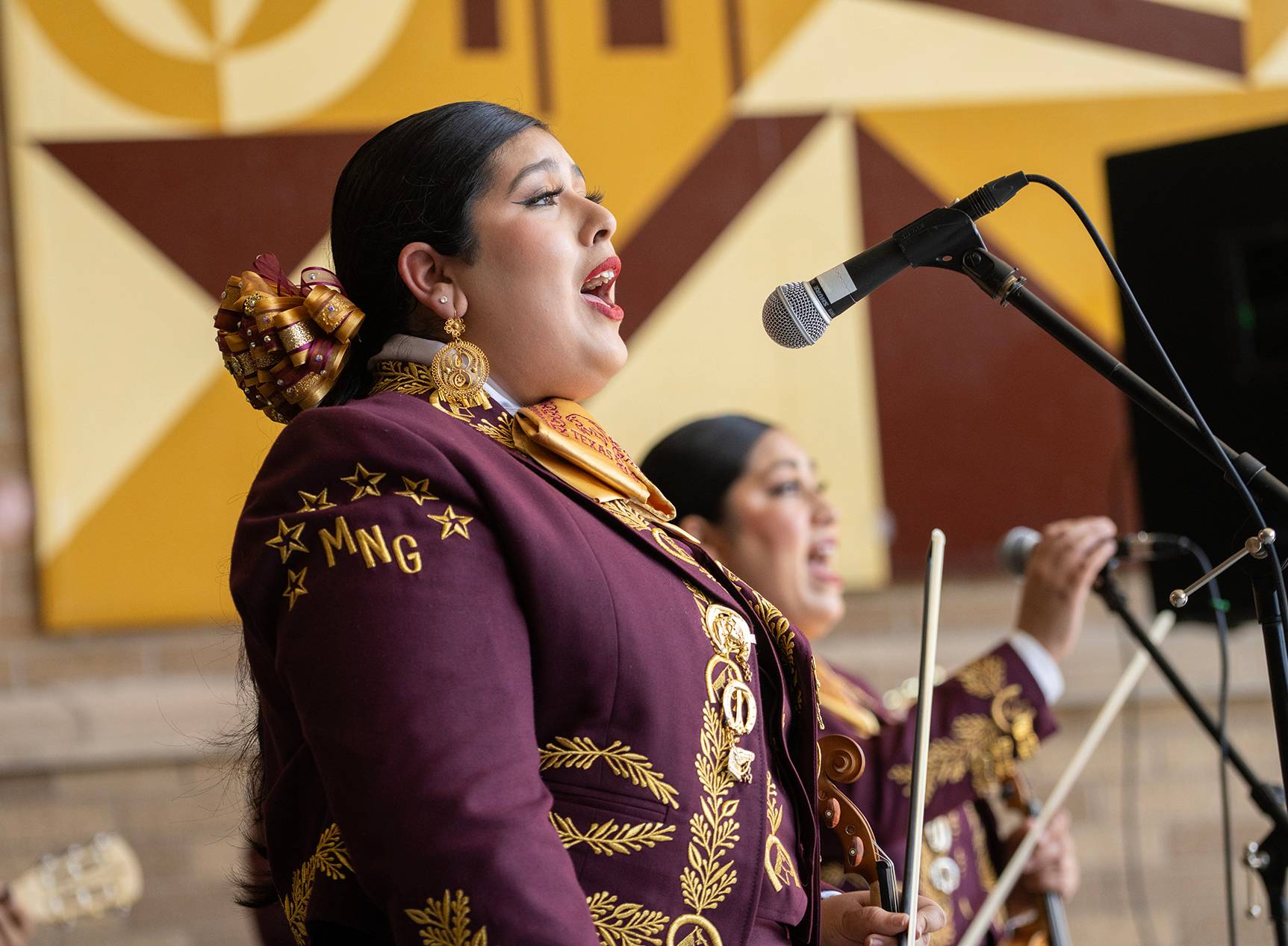Mariachi — Mas y Mas
A new music education program preps Bobcats to meet a growing demand for mariachi teachers
By Matt Joyce

Growing up in Lubbock, Jaqueline Fierro joined her middle school’s mariachi ensemble as a way of connecting with her Spanish-speaking grandparents. Now on the cusp of graduating from Texas State, Fierro is set to help other young people explore their heritage through music thanks to the university’s new mariachi education concentration.
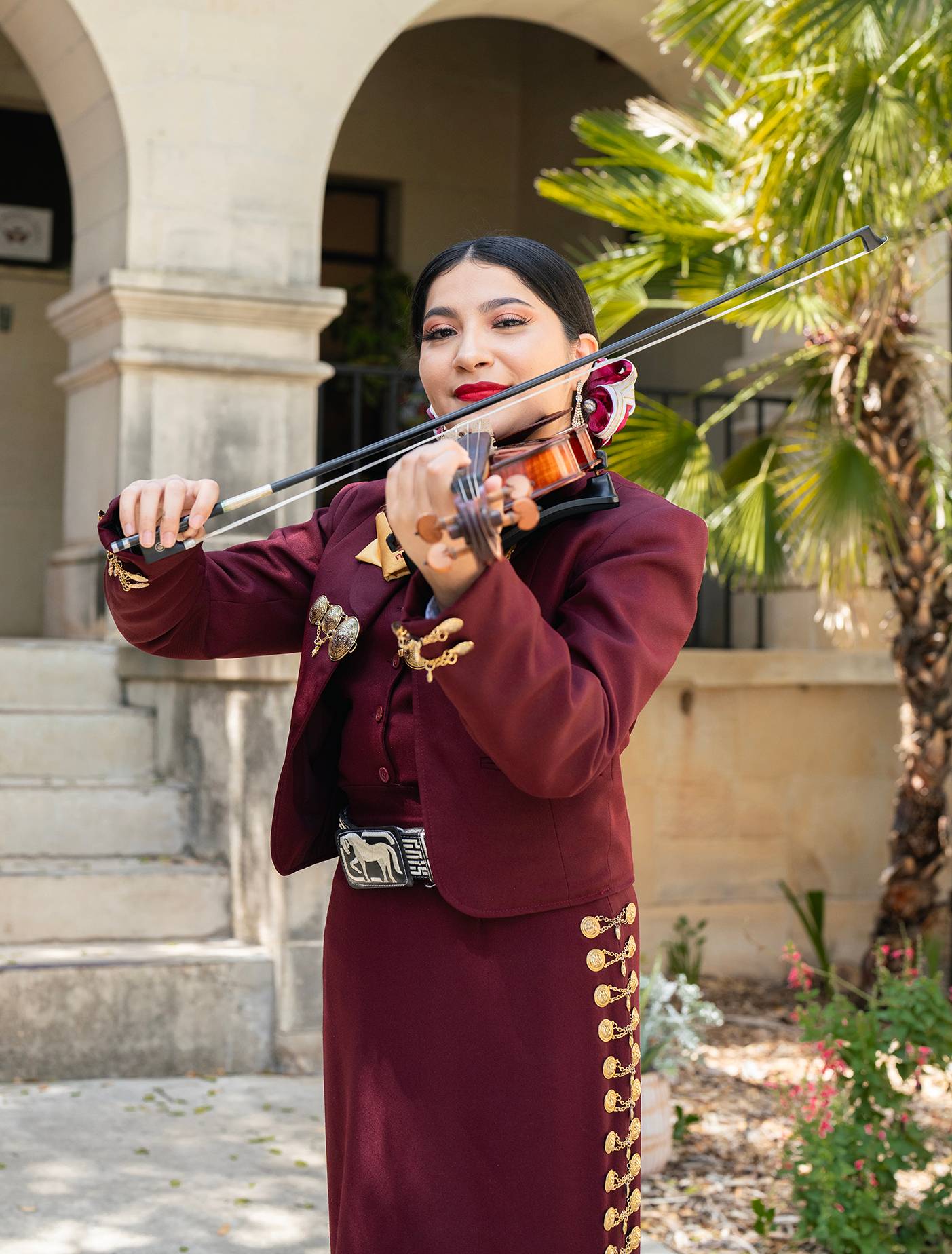
“I have a bunch of cousins, and I was the only cousin who couldn’t speak Spanish,” Fierro says. “It was hard for me because of the language barrier. I knew my grandpa and grandma played in the church choir and music was important to them. Every night, my grandpa would go outside and play music on his guitar and sing rancheras, which is a style in mariachi music.”
Fierro developed into a talented violinist as she played in her middle school and high school mariachi ensembles. At South Plains College, vocal lessons revealed her powerful singing voice. But her goal was to get to TXST.
“Texas State was my dream school because it had a mariachi minor, and I knew I could do music education and study mariachi on the side,” says Fierro, who came to San Marcos in the fall of 2020.
A year later, Fierro’s path solidified when the School of Music introduced a new bachelor of music degree in music studies with a mariachi concentration. The program trains Bobcats to teach mariachi music to students from early childhood through 12th grade.
Fierro is on track to earn her degree in May 2024 as Texas State’s first music studies mariachi concentration graduate. While the School of Music also offers a mariachi minor, the new concentration extends the pedagogical aspect by including a teaching certificate. This fall, nine students are enrolled in the mariachi education concentration and six in the mariachi minor.
Texas State is one of only a couple of schools in Texas — along with The University of Texas Rio Grande Valley — to offer a mariachi concentration in music education. Mariachi educators say such programs are a natural response to the growing number of middle and high schools that are adding mariachi classes alongside band, orchestra, and choir.
According to Texas Education Agency records, the number of full-time equivalent mariachi teaching positions in Texas high schools nearly tripled from 25 in the 2016-17 school year to 69 in the 2022-23 school year. In the same time frame, enrollment in mariachi courses in Texas high schools rose from 2,931 students to 4,378 students.
“It’s reflecting our changing populations in the country, especially with Hispanics being the largest minority in most major metro areas,” says Juan Carlos Cavazos, a Bobcat alum who’s directed the mariachi program at San Marcos High School since 2016. “We have a population that’s been underrepresented in the world of musical education, and mariachi is a wonderful way for the kids, even if they’re removed by a generation or two, to connect with their parents and grandparents and learn about their culture.”
Mariachi music originated in western Mexico in the mid-19th century. By the 1950s, most mariachi bands had adopted a standard lineup of about two trumpets, three or more violins, a vihuela (mini-guitar), a guitarron (acoustic bass guitar), and a nylon-string guitar.
A video of Mariachi Nueva Generación performing at TXST.

At TXST, students who enroll in the mariachi education concentration are trained in the basics of each mariachi instrument so they can teach them; how to arrange mariachi music; and how to direct a mariachi ensemble. Most also play in one of TXST’s two mariachi ensembles: Mariachi Lince de Oro (Lynx of Gold) has 13 members, and Mariachi Nueva Generación (New Generation) has 15.
“Some of the teachers teaching mariachi music don’t have the experience needed,” says Miguel Guzman, a lecturer in Latin Music Studies who directs Mariachi Lince de Oro and teaches mariachi instrument technique classes. “This is where Texas State really offers them a full understanding of what each instrument entails and how to teach it. The concentration focuses on preparing our students to have those skill sets.”
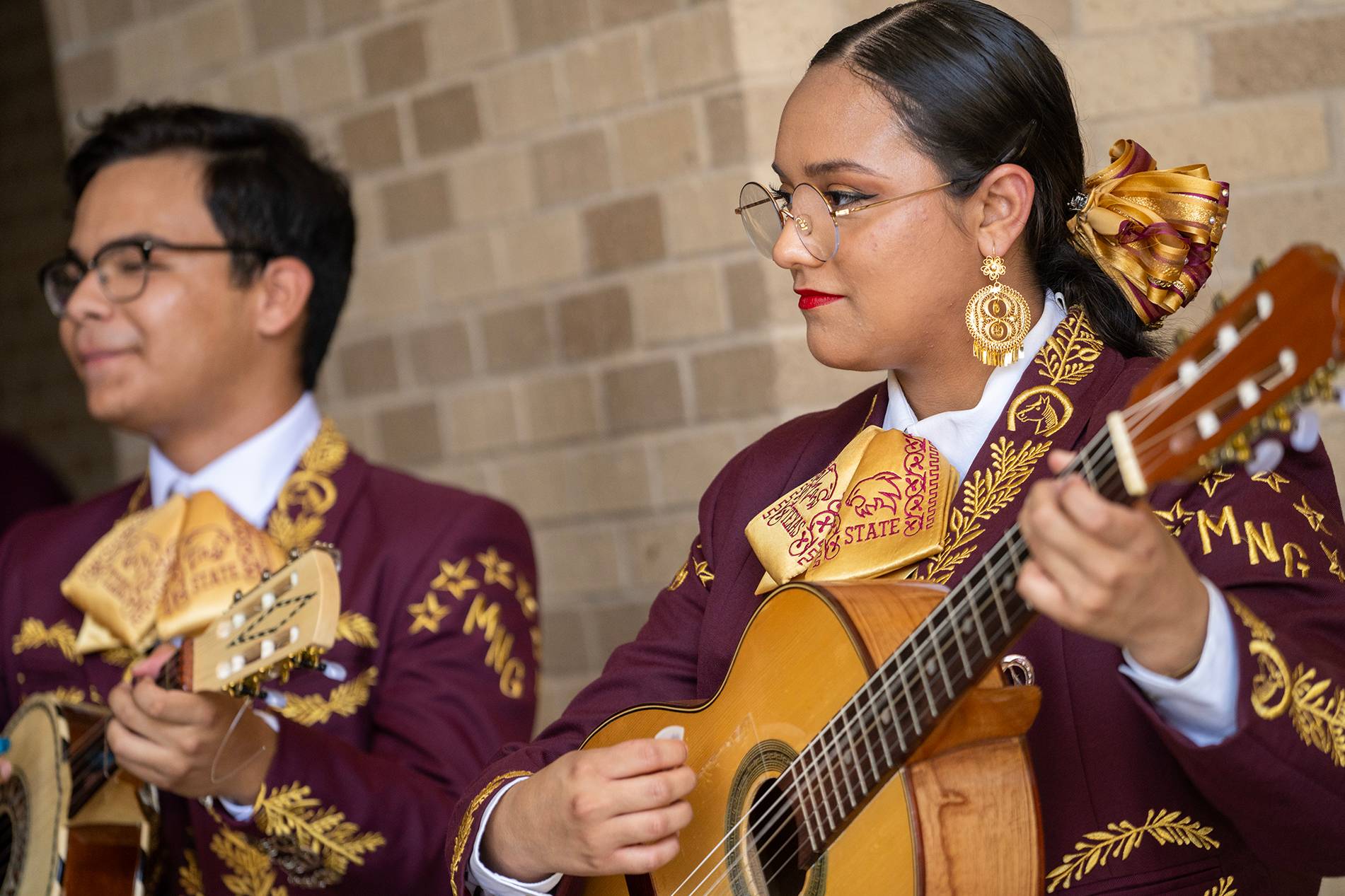
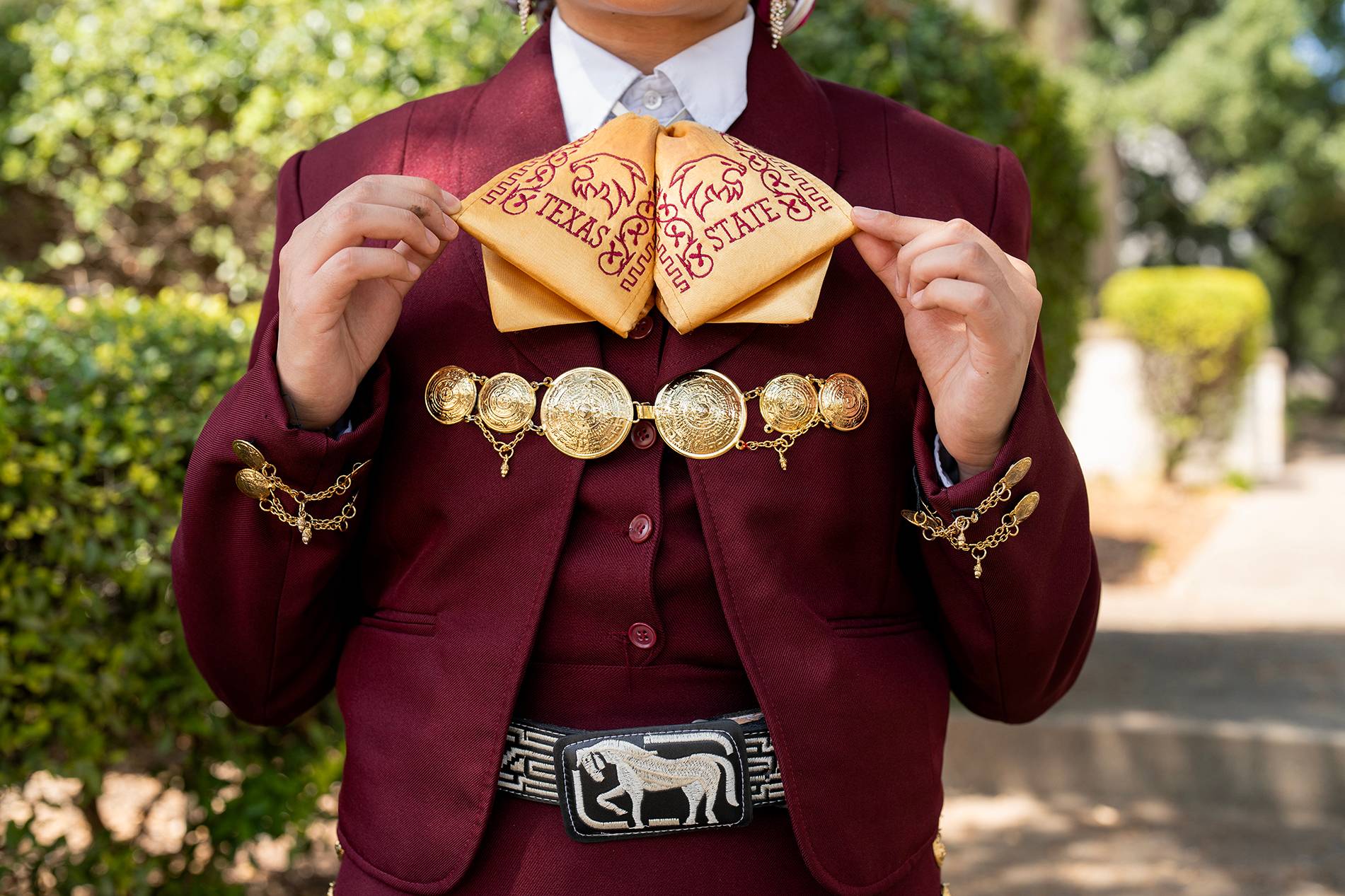
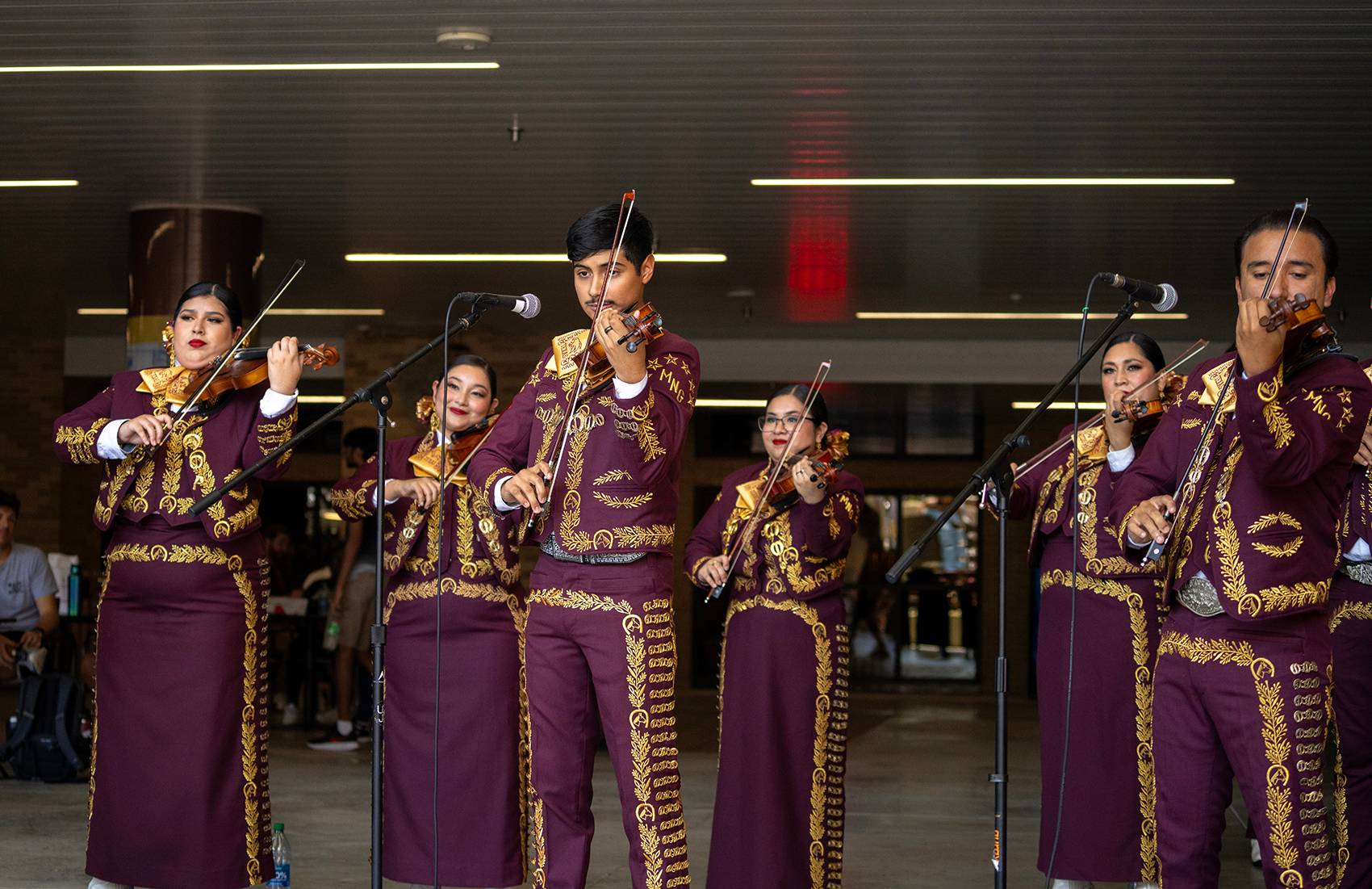
Cavazos, who earned both bachelor’s and master’s degrees in music education at Texas State, played in the earliest iteration of the TXST mariachi ensemble in the 1990s, back when it was called Mariachi de SWT. He says the mariachi concentration will give incoming teachers a leg up compared to those who are trained to teach band or orchestra.
He’s seen the demand for guitar and mariachi classes grow at San Marcos High, where he directs Mariachi Nuevo Cascabel (New Rattlers). Some of the new students are immigrants from countries like Nicaragua and Honduras, which are not traditionally hotbeds of mariachi.
“When they hear music that is simply in Spanish, and they hear other kids singing music in Spanish, they gravitate toward that,” he says. “Even though they just got here from a foreign country, they now have somewhere for them to belong. They can speak the language, they can learn to play guitar, and they have something to do.”
As for Fierro, the final year of her music education degree includes observing a middle school mariachi class and student-teaching a high school mariachi class. She says she plans to pursue advanced degrees in Latino studies and potentially fine arts administration. Or she could become a mariachi teacher.
Either way, her embrace of mariachi music has strengthened her relationship with her grandparents. Her Spanish is getting better, and she plays music with her family during visits home to Lubbock.
“Music has definitely brought me closer with my grandparents,” she says. “Out of all my cousins, I like to argue that I’m their favorite.” ★
Live Mariachi Music
Mariachi Lince de Oro and Mariachi Nueva Generación,
will perform at Evans Auditorium on Dec. 2.
